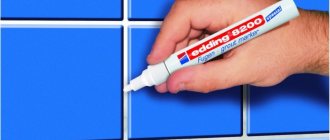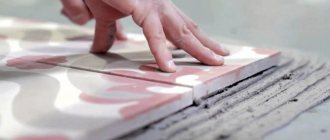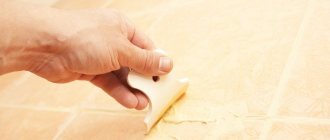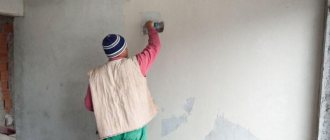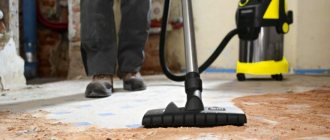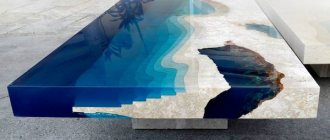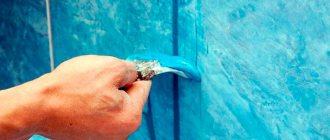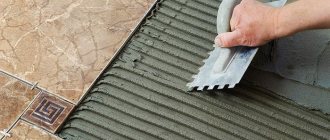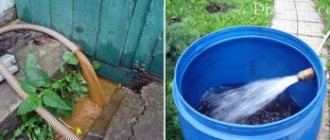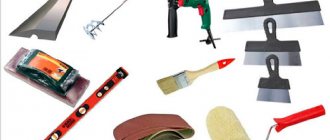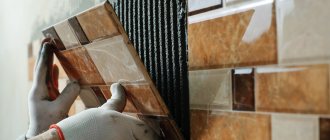When faced with the problem of cleaning epoxy grout residue for the first time, everyone without exception has a feeling of hopelessness. Cleaning companies rarely cope with this difficult task. Having worked with epoxy grouts from different manufacturers and selling them for the last five years, we have collected all the experience and all the questions from consumers and builders on the topic: “Why is it difficult to work with epoxy grout and often the surface remains dirty”?
Examples of contamination of various types of surfaces with epoxy grout:
Once fully cured, epoxy grout becomes a monolithic, abrasion-resistant material. According to their characteristics, epoxy grouts belong to reactive epoxy adhesives, so to clean epoxy grout from tiles or porcelain tiles. Residues of two-component grout that were not washed off in time can be in the form of a film on the surface, in the form of shagreen, similar to sandpaper, or the grout may not be removed from the surface at all and has hardened in a thick layer on the tile.
In the first two to three days, the remaining epoxy grout can be removed with the Fuga Soap eco cleaner. a film from epoxy grout remains on the surface of tiles, mosaics or porcelain tiles after work is completed , then this is the easiest stain to clean:
- Take Fuga soap eco epoxy grout cleaner, manufacturer Kerakoll
- Apply the product to the contaminated area with a brush.
- Wait 15 minutes
- Clean with a brush or special abrasive sponge
- Rinse thoroughly with water.
Recommended cleaning times
Removal of the grout layer is carried out in several stages - from the initial removal of excess to dry and wet cleaning.
It is better to carry out the first stage when the material has not yet hardened, but has already hardened sufficiently. In this case, the risks of damaging the surface of the tile and disrupting the hardening process of the putty are minimized. It’s easy to check the condition of the seams - just moisten them with a damp cloth and evaluate the reaction.
If, after interacting with the liquid, the grout mass begins to increase in size and extend beyond the seam, it is too early to begin cosmetic work. If the layer remains unchanged and does not react to water in any way, then the moment for cleaning is most suitable.
Reference! The average initial setting time for tile grout is about 30 minutes.
How to remove fugu
You can remove the old layer of grout between the tiles using a paint knife. The principle of removing the fugue is to carefully run a knife along the seam several times without touching the edges. The pressure of the knife will cause most of the grout to fall out, after which you will have to dig out the remains. Instead of a knife, you can use a grinder, but this tool is best used only if you have practical experience. The need to remove the fugue arises when applying new grout.
Epoxy grout left on tiles
Grouting mixtures are made based on epoxy resins. In most cases, cement-based mixtures are used. They are cheaper, which pays for the higher costs. Cement grouts delight with their color variety, high strength and durability.
Epoxy fugues are different:
- optimal viscosity and fluidity, which allows you to fill the joints between tiles well;
- moisture resistance;
- durability and beautiful appearance.
So, such fugues are used for covering grout joints on tiles in rooms with high humidity, for outdoor work, for finishing lining of swimming pools. But what to do if the grout remains on the tiles?
Epoxy grout can be removed in different ways:
- heating the resin stain;
- freezing the soiled base;
- household chemicals.
Heating
A stream of hot air is directed onto the resin stain. You can use a hairdryer; it is important to regulate the degree of heating of the surface so as not to damage it.
After delamination and softening of the resin, pry up the stain with a paint knife or spatula. If you cannot remove all the stain at once, heat individual areas of the stain, remove them with a spatula or blade, then move on to the next fragment.
Removing a tar stain ends by washing away small particles of contamination with acetone or another suitable solvent.
Freezing
Refrigerants are sold in aerosol form in stores. They are suitable for freezing soiled areas. Please note the following when working with refrigerant:
- You need to work in a respirator. The aerosol sprays harmful substances, so you need to protect your respiratory system.
- When performing such work, children or pets should not be present in the room. It is important to organize a flow of fresh air.
- Please read and follow the instructions before use. Shake the aerosol canister.
- Spray coolant onto the epoxy stain. When applied correctly, the resin will become brittle and susceptible to mechanical stress.
- After this, pry up the dirt with a spatula or painting knife and remove it.
It is better to repeat the spraying again than to use force when removing the stain with a spatula. This can damage the lining. Heating and freezing are suitable if the grout or resin remains on the surface for a long time.
If you rubbed the seams only yesterday, then a soap solution and a fiber sponge will do. With reasonable effort, you can remove the grout from the tiles. Then wipe the lining dry.
Household chemicals
Both household chemicals and chemical reagents will cope well with stains on tiles. Use boric or hydrochloric acid to remove tar and grout stains. Afterwards, you need to go through the lining with a cleaning solution, which will remove the remaining reagents and the grout itself.
Don’t forget: you need to wear gloves and a respirator when working.
In this case, manual influence will also help. Do not use abrasive materials; do not sand the stain with sandpaper. Using a blade or putty knife, carefully try to pry up the epoxy grout. Work carefully to avoid scratching the glaze on the tile.
Other surfaces
What if the resin needs to be removed from the tree? What then needs to be taken into account? To remove it from a wooden surface, the same methods are used: heat, coolants and solvents.
Heating must be controlled so that the wood does not swell or dry out.
Before heating, the area to be treated can be treated with acetone. This will avoid swelling and delamination of the base.
After heating, the remaining glue must be carefully pryed off with a spatula and removed.
Epoxy resins are often included in glue that is used for gluing rubber products, shoes, and other things. You need to wear gloves when working with such adhesives to protect your hands.
We suggest you read: How to remove ballpoint pen ink from clothes at home
What to do if glue gets on your hands:
- Take off your gloves and throw them away.
- Wash your hands with tar soap or regular laundry soap.
- Soak some cotton wool in solvent or nail polish remover and wipe off any remaining glue from your hand.
- Wash your hands again with soap.
- Apply moisturizer to your hands to prevent irritation and cracked skin.
If the glue has already dried and you only notice now, use the same solvent to wash off any remaining glue. To soften the epoxy glue, use the means at hand: rich mayonnaise or oil.
How to remove epoxy resin
Epoxy resin dries completely within a day and is invulnerable to the effects of acid-base compounds. It is possible to remove traces of epoxy resin only with the help of highly active reagents. When using cleaners, you must follow a number of rules and properly prepare for the work. Read more here.
Preparation
The first preparatory step is to select and purchase a special softener that can remove epoxy resin residues. To complete the work, you also need to prepare a metal brush for processing the ribbed surface, protective gloves and a respirator.
Seam sealing
To prevent the cleaner from destroying the tile seams, it is necessary to close them while the stains are being washed off. Applying a thick layer of masking tape creates an obstacle for the solvent to pass to the seams. If the solution gets on the seam, you must immediately wipe it off with a rag or sponge.
Solvent
If the epoxy resin has dried, you need to treat it with a solvent and wait 10 minutes for it to soften. Then traces of grout are removed with a metal brush or scraper. When performing work, it is important to be careful and control the degree of pressure so as not to destroy the tiles or leave scratches on the surface.
Cleaning different types of grout
Grout mixtures include different components that give the solution certain beneficial properties.
Therefore, it is necessary to take into account the basic composition of the product and its drying speed.
Fresh grout
Grout is considered fresh if it has not yet had time to set and dry. As a rule, it is easily removed within the first 24 hours after facing work. If the tile is matte and embossed, the mixture should be removed immediately - with a soft spatula and a dry cloth.
With glossy tiles everything is different - it can only be washed the next day, otherwise scratches will remain on the surface.
Fresh putty can be removed with a damp sponge. It is moistened in water and wrung out thoroughly - a poorly wrung out sponge will blur the seams and delay their drying.
Wash the tiles with a sponge until all stains are eliminated.
Cement grout
Since sand is included in the cement grout, the remaining mixture is easily washed off with plain water.
After half an hour, when the initial setting of the cement occurs, excess and stains can be removed with a damp sponge in several approaches. You need to rinse the washcloth as thoroughly as possible - under running water or in a large basin.
The sponge should not be too wet so as not to wash out the space between the tiles.
If the grout layer has already dried, and there are traces of putty and glue on the tile, acids – sulfuric, hydrochloric or acetic – will come to the rescue.
Advice! Regular food vinegar, a concentrated solution of citric acid, or a water-glycerin mixture will work well with cement mortars.
“Epoxy”
Grouting materials based on epoxy resin are considered to be of the highest quality. They lie smoothly, harden quickly and have a wide palette of colors. But due to the high setting speed, it is possible to clean the surface of epoxy resins only in the first day. Already on the second day, only the mechanical method will help.
On the first day, special solvents and acid reagents will come to the rescue - such as MAPEI, Litokol, Sopro, Keranet, Clean Kiilto, etc.
Their active components interact with resins, allowing the substance to be washed away from the surface without damaging the base.
General cleaning of the lining in the bathroom or kitchen can be carried out when the main contamination of the coating has been eliminated and the seams have lightened. Some owners prefer to simply carry out wet cleaning, wiping the entire area of the tile with a wet rag.
Regular dish soap will help make glossy tiles shine. You can prepare a soap solution or drop a little onto a sponge.
After treatment, the product is allowed to dry for 10 minutes, and then the tiles are wiped dry with a soft cloth.
You can try cleaning embossed tiles with dry citric acid powder:
- Moisten a work sponge with water and wring it out.
- Pour a small amount of lemon onto a washcloth.
- Wipe the surface without touching the tile seams.
It is advisable to wait until the crystals melt on the surface of the sponge, or clean with crystals, but without pressing on the lining.
The embossed surface can be treated with a homemade paste made from vinegar and soda. The acid will make the grout more flexible, and the soda will act as a soft abrasive. It’s easy to prepare the paste - mix soda and vinegar in a ratio of 3 to 2. Apply the product to the dirt and after 10 minutes, brush over it.
A solution of white spirit will help restore the cleanliness of porcelain tiles. For half a liter of water you need to take 2 tablespoons of white spirit and mix thoroughly.
Use a cloth to carefully remove any remaining grout, and then completely clean the surface of the alcohol solution.
We suggest you familiarize yourself with How to clean a frying pan from carbon deposits.
Porous tiles are the most difficult to clean, because they literally absorb all dirt. The most effective method of cleaning will be a mechanical cleaning method using a brush or hard cloth. You can also use a scraper designed for washing pots and pans.
If the grout is still fresh, you can remove it from the pores with a felt glove dipped in vegetable oil.
You can take note of this popular recipe:
- Mix baking soda, natural lemon juice and vinegar - a few tablespoons of each component.
- Dilute the resulting mixture with water to one and a half to two liters.
- Soak a soft cloth in the solution and wipe the tiles, carefully treating all pores.
Sometimes you have to resort to more aggressive methods using chemicals - acid removers and solvents. They penetrate deep into the pores and lift all contaminants, including grout, to the surface.
Reference! Special washes not only effectively deal with all kinds of dirt, but also give the seams a uniform color.
Safe products and tools
To remove the grout, use a special scraper.
You can clean the grouting material from the floor and walls with a scraper, brush or pumice stone. This is a monotonous and difficult way to get rid of dried fugue. It takes a lot of time and effort, but the risk of damage to the tile coating is minimized.
Before you wash the grout off the tiles, try to initially remove dirt in a small area with a scraper or brush. Decide which tool is more convenient to work with. For best results, wet the stains and, with some effort, remove them.
Safe chemistry
You can clean the tiles from the fugue after repair by using special chemical liquids for cleaning ceramics from mortars. As a rule, these are acid preparations to destroy the remains of epoxy or cement fugue. Before starting work, you need to test the detergent on a small, inconspicuous area. It is also recommended to protect all surfaces made of synthetic materials, such as PVC, acrylic, etc.
Choose products from well-known manufacturers, read the composition and pay attention to what type of fugue the product is intended for.
Liquids for cleaning cement and epoxy deposits:
- Prosept Cement Cleaner. Concentrated liquid effectively removes old stains and stains. Before washing the grout from smooth and textured tiles, the detergent must be diluted with water 1:5. Spray the liquid onto the work surface with a spray bottle. After ten minutes, remove the residue with a damp sponge or lint cloth. Afterwards, thoroughly wash the surface with clean water 1-2 times.
- Fila CR10. Professional cleaner for removing epoxy fugue residues. Removes stubborn and old stains. Shake the container with liquid before use. Apply undiluted product with a brush to the entire surface of the dirt. Leave for 15-25 minutes. The most stubborn stains can be scrubbed with a stiff brush or spatula and rinsed thoroughly with water. Repeat if necessary.
- Atlas Szop. Cement residue cleaner. The liquid effectively removes both fresh and old cement stains on the ceramic surface. The cleaner is not recommended for use on substrates that are unstable to its influence, for example, marble. Depending on the contamination, it should be diluted with water. To remove stains and deposits of cement fugue, the ratio of water and product will be 1:3; for old large stains there is no need to dilute it. Apply the solution to the stains with a sponge. Leave for 10 minutes and then remove any remaining residue. Rinse the surface thoroughly with clean water.
- Litokol Litonet Pro. Liquid cleaner for epoxy fugue residues. The jelly-like product removes marks and stains from ceramics of various textures and shapes. It even copes with dried dirt on the walls without running down. The cleaner does not need to be diluted. The product must be distributed evenly over the entire surface. Wait 25 minutes and remove with any remaining grout. Once cleaning is complete, rinse the tiles with clean water again.
- Clean Kiilto. Acidic liquid for removing building cement mortars. Before applying the cleaning product, you need to moisten the stains with water. Then use a sponge with solvent to treat all stains. Wait 20 minutes and clean the surface. Using a hard plastic brush can speed up the removal of dirt.
- Keranet Mapei. Acidic product for removing cement grout from tiles. Available in the form of a solution and concentrated powder. The main component is organic acid. Removes traces of cement mortar and does not damage the joints between tiles.
- Unicum. The concentrated product is intended for removing fugue and putty. It must be applied evenly and spread with a sponge onto the stain. After 20 minutes, wipe with a cloth and wash the surface of the cladding with water.
- Starwax. Cement based grout remover. Effectively removes old and stubborn dirt. The solution does not need to be diluted with water. It is necessary to apply the product to stains or stains, wait 15 minutes and use a plastic brush to remove the remaining fugue. Afterwards, rinse everything off with clean water and wipe the surface dry with a cloth.
Rules for removing dried contaminants
When removing dried putty, it is necessary to take into account the type of tile coating - glossy or matte. Glossy tiles do not tolerate hard abrasives; they are easily scratched by powders and brushes. Therefore, you need to choose methods that are as gentle as possible - first try wiping off the dirt with a damp sponge and detergent.
If this doesn't work, use a soft brush or the back of a scouring sponge.
Matte and textured tiles do not impose strict requirements on methods for cleaning dried grout. It is allowed to use brushes and acid washes, but within reason. Chemical preparations should not contain substances that can harm the tile coating - information should be found in the instructions.
Before using abrasives, the space between the tiles should be covered with masking tape.
It is almost impossible to avoid traces of grout when laying tiles. But it is quite possible to minimize the area of pollution by taking the following measures:
- stick masking tape or adhesive tape around the perimeter of all joints, which will protect the surface of the tile from dirt;
- cover adjacent areas with cellophane film, not forgetting the floor and plumbing.
You need to glue the tape so that its edges fit tightly to the surface of the tile and to each other. This will prevent the putty from leaking and will allow you to process the seams with high precision and a clear contour.
You can use several fixing agents at once - seal the perimeters with masking tape, and seal the joints with tape and secure them with furniture staples.
Prohibitions when deleting
When removing grout, it is important to remember a number of prohibitions:
- You cannot use purchased solvents that are not intended for removing grout from tiles, as ignoring this point can lead to damage to the surface.
- You cannot begin general cleaning of the surface until the grout has completely dried and the main contaminants have been removed. Violating this rule may result in damage to the compound between the tiles.
- You should not use solvents, even homemade ones, with your bare hands. Rubber gloves are a necessary means of protection.
- Do not use a metal scraper or knife to clean directly on the tiles. Such a tool can leave damage not only on a glossy surface, but also on a matte and embossed one.
How to remove from skin and fabric
What should you do if resin gets on leather furniture or your favorite clothes?
- Assess the extent of the damage: if the damage is aggressive and has penetrated deeply, then it will be difficult to clean, and in some cases cleaning does not make sense.
- Use gentle solvents: ethyl alcohol, ammonia solution in a 10% ratio.
- Any type of alcohol will do: cotton wool soaked in alcohol can wash off all dirt. It takes patience and careful effort.
- The same freezing method is used.
Place an item of clothing in the freezer and the cold will cause the stain to become brittle and brittle. The method of freezing in the freezer is also suitable when chewing gum is stuck to clothing. - Exposure to heat: iron the damaged area of clothing several times through a layer of gauze.
They practice an unconventional cleaning method: Pepsi-Cola or Coca-Cola will do an excellent job with both rust and resin.
Bottom Line Removing epoxy resins and resin-containing products is a labor-intensive process. Removing the consequences of careless grouting of tiles and removing epoxy glue stains from clothing are completely different cases.
The tips in this article will help you deal with every case of contamination.
Surface finishing quality
The surface of the finishing material for the bathroom and kitchen varies. Therefore, each tile has separate requirements for grout removal:
- The glossy coating must be washed out 4-8 hours after grouting, and for cleaning it is recommended to use a clean gel solution and soft rags;
- The matte finish welcomes instant treatment using professional products and a sponge;
- Relief tiles are suitable for quick cleaning with various solutions and products containing minor abrasives.
The technique for removing grout is to grab the working material with a damp rag or sponge.
After this, the rag must be wrung out well in a container to dissolve the working residues in the water. A poorly wrung out consumable will create more streaks on the tile and may even damage its surface.
How to clean seams?
The seams between the tiles, even with high-quality cladding, lose their presentability over time. Dust, grease and dirt accumulate here, and mold also multiplies in damp rooms. There are two effective methods for cleaning seams - chemical and mechanical.
Chemical method
Any household chemicals designed for cleaning ceramic coatings will do. They remove dirt, mineral deposits, fungus and bacteria, and also effectively combat unpleasant odors.
The above-mentioned folk remedies will also come to the rescue - solutions with vinegar, soda, citric acid and glycerin.
Sandpaper is a proven way to combat inter-tile dirt. The abrasive should be as thin as possible, and the work should be done carefully so as not to touch the tile coating. To be on the safe side, roll the paper into a thin tube equal to the width of the seam. Pasted strips of masking tape will also help protect the edges of the tiles.
We suggest you familiarize yourself with How to clean grease from kitchen tiles: folk remedies and household chemicals against stubborn greasy dirt on the floor and walls
After sanding the seams, the surface is washed with water and wiped dry.
A melamine foam sponge works great on seams.
It is a soft yet durable material that easily penetrates into any pores, leaving them clean without chemicals.
Hard-to-reach areas can be treated with a toothbrush with washing or cleaning powder.
Seam composition
The main task of grouting is to prevent moisture from penetrating into the contact areas of the facing material. An indicator of the quality of the putty is the absence of cracks for a long time.
There are two types of grout for seams:
- Dry ones are the most common and simplest means. The basis of the mixture is cement and plasticizers with mineral components. Before use, dry aggregates are diluted with water according to the instructions for use.
- Liquid (synthetic) - produced on the basis of resins. Some compositions are presented in the form of two components: main and hardener, which must be pre-mixed before starting work.
The principle of operation of the mixtures does not differ from each other. The grout applied to the seam fills the entire space between the tiles, forming a single whole. The frozen mass does not allow moisture and dampness to penetrate into the internal structure of the masonry. Fillers have proven themselves well when tiling bathrooms, washrooms and kitchens, where the humidity level is always higher than in other residential areas.
Grouts are divided into several types depending on the material of the base layer. Let's look at which aggregates are best to use for a particular tile joint.
For cement-based grouts
This is the most common putty. The main component of the construction filler is Portland cement. If it is added in its pure form, then seams with a thickness of less than 5 mm are suitable for putty. When sand is added to the base, a grout is obtained, which is used for sealing joints with a thickness of more than 5 mm. Manufacturers of the product can add special components that improve the brightness of the color range and the speed of hardening.
Working with such material is easy and does not require any specific skills or knowledge. When it hits the surface of a ceramic tile, it hardens. It is not difficult to clean such tiles from grout; just soak it with water and remove it with a spatula.
The main advantages of cement-based grout:
- does not require additional tools when using;
- has good adhesion;
- versatility;
- moisture resistant;
- low cost.
For epoxy compounds
They are a two-component composition of resin and fine filler. The second is colored sand, which is a strengthening and pigmenting component. When a hardener is added, epoxy grout forms a waterproof, dense layer. It is advisable to use joint filler in wet areas, especially in baths, saunas, and swimming pools.
Advantages:
- does not absorb moisture;
- has an elastic structure;
- withstands exposure to aggressive substances;
- does not collapse due to sudden fluctuations in outside temperature;
- wide range of color solutions;
- does not fade;
- high performance properties;
- long service life.
Epoxy grouts have the following disadvantages:
- hardens quickly;
- difficult to clean from the surface of the facing material;
- high price.
Advice. You can work with epoxy grouts in any conditions, both inside buildings and structures, and outdoors. In order for the result to be accurate, you must have certain skills, otherwise damage to the surface of the cladding and the seam itself is possible.
For silicone sealants
Small seams up to 3 mm wide are suitable. Silicone fillers are used not only in their pure form, but also as additives to other types of grout. The elastic mixture withstands mechanical stress at any outside temperature. It will be problematic to wipe off such a sealant due to its high adhesive ability.
Characteristic advantages:
- strength and ductility;
- does not crack;
- high degree of adhesion;
- waterproof;
- wide range of colors.
Minuses:
- if it gets on the surface, it must be removed immediately, otherwise a stain will remain;
- the mixture must not be exposed to steam;
- high price of the product.
Advice. Silicone-based products are not recommended for filling ceramic tile joints in rooms with high humidity. Over time, the cracks between the platinums will begin to darken due to fungus and mold.
Grout restoration
Grout joints sooner or later need updating. Restoration allows you to improve not only the appearance of the coating, but also its performance properties.
Ready-made chemicals for the restoration of tile joints are sold in ready-made liquid form in bottles. They contain components that renew color, eliminate dirt, lime, mold, darkening, grease and oil stains.
Advice! For light grout, choose products containing bleaching components; for colored grout, choose products that do not affect the shade of the grout.
You can use special products in concentrated form or diluted with water, depending on the level of contamination. 5-7 minutes after applying the drug, the tiles can be cleaned with a stiff brush.
The available tools in any housewife's arsenal also do a good job of updating seams.
- Washing powder. Prepare a liquid paste from the powder and a small portion of water. Dip a toothbrush into the mixture and scrub the dirty areas, then rinse off the foam with water.
- Washing gel. Once finished, apply the gel mixture to the seams and wait a couple of minutes. You can clean dirt with a sponge, brush or any other abrasive.
- Spray. The spray cleaner may contain additives that dissolve grease, destroy lime and mildew. It is sprayed directly onto the joints between the tiles and left for a while for a chemical reaction.
Then wipe the seams with a brush or hard sponge and polish with a dry cloth until shiny.
If the dirt has become too deep and even mechanical methods do not help, there is nothing left but to partially remove the grout.
There is no need to completely remove all the grouting material - just clean off a layer 2-3 mm thick. The work is carried out with a scraper or extender with preliminary wetting of the grout.
Cement and latex mixtures are well softened with ordinary water, but for epoxy products only a special solvent is used.
After removing the grout material, the edges of the tiles are sanded with sandpaper. The cleaned surface is primed for better adhesion to the new layer. Next, prepare a portion of grout and compact it tightly between the tiles with a rubber spatula.
A waterproof seam marker can be purchased from a specialty store. It masks unsightly areas on the seams well, but does not fundamentally solve the problem of cleaning. The achieved cosmetic effect will become invisible in a few weeks.
Restoring with a marker is easy - just go along the seams with a working rod. The work area must first be prepared - wash everything with soap and water, remove mold and putty on cracked areas.
How to care for tiles
In order for the coating to last for a long time, you need to know how to properly care for tiles.
For glossy structures, strong acid-based detergents should not be used. This may damage the gaps and seams between the products.
It is best to purchase special products for tiles, ceramic tiles and porcelain tiles.
Do not use metal brushes or abrasive powders because they will severely scratch the surface of the coating. This is especially noticeable on glossy ceramic tiles.
The Best Tile Cleaners
To ensure that the tiles retain their attractive appearance for a long time and do not fade, it is better to use specialized mild detergents:
- Mister Muscle. Eliminates plaque, rust, removes stains from the surface of tiles and gives it shine. It is necessary to apply the liquid to the dirt, wait 3-5 minutes and walk again with a damp sponge. It copes well with old, stubborn stains and does not run off vertical surfaces. In this case, there is no need to scrape and rub the plaque with a washcloth. The detergent perfectly removes even formed mold from the grout.
- Frosch. Suitable for most types of tiles. Effectively removes dirt, grease, stains and plaque from ceramic tiles. Frosch is harmless to the body. The product neutralizes unpleasant odors and kills germs. To clean the tiles from dirt, dilute 2 caps of detergent in 5 liters of water and clean the surface. Not intended for use in its pure form.
- Cif Anti-plaque. Removes accumulated dirt thanks to a unique water- and dirt-repellent formula. In a matter of seconds it will remove limescale and soap stains from the surface of the tile. SIF should be applied evenly to the dirt, wait 5 minutes and rinse with clean water.
- Domestos. Effectively eliminates fungus, whitens grout joints between tiles and disinfects. Directions for use: Dilute 2 caps of gel in a five-liter bucket of water and remove dirt with a sponge or soft-bristled brush. Then rinse the surface with water and wipe dry.
- San-klin (Santik). Liquid for removing limescale, rust and other contaminants from tiles. It must be applied to the surface for 5-10 minutes and then remove any remaining dirt.
You can also use the following aids to clean tiles:
- Bleaching powder. Dilute the powder with clean water. Pour the solution into a spray bottle and spray it onto the desired surface. Then leave for five minutes and rinse with plenty of clean water. Let the ceramics dry or wipe the surface with a dry cloth. Chlorine solution kills germs and gets rid of mold.
- Melamine sponge. Easily wipes off minor stains, removes limescale and does not spoil the appearance of the cladding. You just need to wet the sponge and rub away the dirt.
- Steam cleaner. A gentle alternative to aggressive cleaning liquids. Steam cleans the tile surface no worse than chemicals. And at the same time it does not have any mechanical effect. Steam supplied under high pressure dilutes grease stains on the tiles and disinfects the surface being cleaned, killing germs. The steam cleaner is excellent at removing mold and limescale in the bathroom. It easily removes even greasy stains in the kitchen.
To prevent ceramics from fading and scratches appearing on it during use, you need to treat it with a special varnish. A durable protective coating is created, the color does not change for many years, and caring for the tile surface is greatly simplified because almost no dirt accumulates on the varnish coating.
With proper cleaning and good timely care, ceramic tiles will last for many years.
Some important recommendations
To clean tile grout efficiently, you should pay attention to several important points:
- it is necessary to remove excess tile adhesive and grout immediately, preventing them from drying on the surface of the cladding;
- for scrubbing, it is better to use a sponge or a piece of foam rubber - if they do not help, you can use felt, burlap or any hard fabric;
- You cannot immediately start using acidic removers and aggressive solutions - you need to read the instructions and take into account the characteristics of the tile;
- It is better to clean vertical surfaces from top to bottom, horizontal surfaces - from the far corner to the door;
- You need to be careful when handling glossy tiles - they are easily damaged and leave streaks;
- white deposits from detergents and cleaning products can be easily removed with a dry felt glove;
- The cleaning should be completed by treating the seams with fungicides that protect the room from mold;
When working with chemicals, you must wear protective clothing, gloves and a respirator.
The effectiveness of all the above methods has been time-tested and tested by builders and craftsmen. It is enough to be patient, put in a little effort and money - and even the most persistent stains and the strongest grout will not leave a trace behind.
Special means
You can deal with the remains of the building mixture on the tiles using special household products that contain acid. These are highly active solutions and various powders based on the specified component. It is worth noting that products containing organic acids are ideal for removing other contaminants after repairs.
Compositions with acid quickly remove stains from glue and primer solutions. This category also includes traces of grout (even colored ones), which quickly harden on the tiles. Also, special products give the treated spaces between the tiles a uniform appearance.
When choosing such washes for cleaning fugue, it is necessary to take into account the technical properties of the material. It is worth checking in advance whether the tiles are resistant to chemical influences. Otherwise, marks from contact with the acid may remain on the surface, which will be impossible to remove in the future.
Particular attention should be paid to liquid formulations and gel cleaners. According to many experts, they are the ideal choice for cleaning all types of surfaces. The principle of operation of these compositions is to create a quick reaction that softens the building mixture.
As for powder options, they should be used with caution.
They can be especially dangerous for:
- marble tiles;
- granite finishes;
- materials from marble chips.
It is also not advisable to use powders for removing grout from limestone surfaces.
When choosing household compounds for removing stains from tiles, you need to take into account the fact that they all differ from each other in different percentages of acid. Many varieties also contain flavorings and other components. Carefully study the composition before purchasing, because the wrong product can ruin the finish.
If you decide to clean your tiles using professional methods, be sure to follow the manufacturer's instructions. As for auxiliaries, it is also better to use sponges with a soft base to remove old and dried fugue. Please note that you should never use metal objects or hard-bristled brushes to clean ceramic tiles, as they can scratch the material.
Be sure to wear gloves before using products containing acid. Cleaning must be done carefully. Make sure that the solution does not come into contact with the skin and mucous membranes.
Other contaminants during repairs and methods for cleaning them
The process of covering walls or floors is always associated with the appearance of construction dust, debris and dirt. At the end of the work, stains and traces of paint or primer often remain on the tiles. All this requires timely removal, otherwise over time these substances will be much more difficult to remove.
Traces of paint
There are several ways to remove paint residues:
- Gently scrape off with a sharp knife or blade.
- Remove any remaining paint with a cloth soaked in acetone.
- When the stains are large, it is better to soak a piece of cloth in a solvent and leave it on the contaminated surface for 15-20 minutes. After this, rinse with water.
When using one or the other method, care must be taken, especially in cases with glossy surfaces. They can be easily scratched with a sharp object or the texture can be damaged by a product containing acid.
Remaining primer
After drying, the primer leaves unsightly white spots that often cannot be washed off with plain water.
The primer leaves white marks on the tiles.
To get rid of its traces, you can use the following cleaning options:
- Try to carefully scrape off the stain with a scraper.
- Add 1 tbsp to 5 liters of water. granulated sugar, boil. With the mixture cooled down but still hot, rinse the stained surface.
- Leave a cloth soaked in solvent on the stain for 10 minutes, then rinse with warm water.
- Apply fresh primer to the old stain and leave for 5-10 minutes. It will soften the hardened product, after which it can be easily washed off with hot water.
- Use a special primer remover, which is sold in hardware stores.
Construction dust
Of all the contaminants, construction dust is the most harmless, although cleaning will still take time.
What to do after the repair is complete:
- Using a rag or soft brush, sweep all debris from the walls and floor into one place and carefully collect it.
- After this, remove smaller particles with a vacuum cleaner.
- Remove remaining grout or adhesive stains using a suitable method for the particular case.
- Wash the tiles with warm water.
- To consolidate the effect, use household chemicals to care for ceramics.
- Wipe the tiles with a dry cloth or microfiber cloth. This will remove any remaining stains and give the tiles a shine.
It's good if you have a steam generator at home. Steam treatment of the facing surface will remove all dust not only from the tile itself, but also from the freshly jointed surface, as well as from hard-to-reach places that are difficult to clean with a rag or sponge. At the end of the process, you need to wipe all surfaces with a dry cloth.
Cleaning fresh grout
Modern grout hardens within 24 hours, so it is easiest to clean it immediately after filling the tile joints. But first, after processing, it is necessary to check the seams for stability. Lightly moisten them and observe the reaction. If no changes appear, you can begin to wash away the dirt.
To do this, lightly wet a soft sponge in water and carefully wipe the tile joints to remove dirt. When removing excess mortar from facing tiles, do not wet the sponge excessively - this can lead to distortion of the seams
If you missed the moment, the cleaned joint has dried out slightly, and white marks appear on the tiles, it is recommended to resort to the following cleaning measures:
- White stains can be washed off well with special felt graters using regular dishwashing detergent or vinegar solution (add 100 grams of vinegar per 2 liters of water).
- Baking soda will help remove grout marks. Apply a little soda to the slightly moistened surface of the tile and begin the scrubbing process in a circular motion.
- A felt grater soaked in vegetable oil will help in the fight against dirt on embossed tiles.
How to clean tiles after grout repair?
To avoid problems with cleaning grout from the surface of ceramic tiles, you should remember that such contaminants are most easily and quickly removed during the repair process, before the building mixture has had time to harden.
After tiling a small area, you should check how well the mortar has set and begin removing dirty drops and marks on the ceramic surface. To check the condition of the grout:
- Lightly dampen the seam with a damp cloth.
- Observe the behavior of the material.
Important! Evaluate the result based on the following criteria:
- If the grout begins to swell and extend beyond the boundaries of the seam, then this behavior of the building material indicates insufficient hardening and a low degree of adhesion.
- If you don’t notice any changes after soaking, then everything is fine and you can start cleaning the surface from any remaining building material.
Grout removal technologies
You can clean the tiles from grout after repair in two stages:
- Dry cleaning. This procedure is carried out after laying a small section of tile by wiping the surfaces using a special grater. The tool is held at right angles to the coating.
Important! It is recommended to carry out cleaning movements diagonally to the surface of the seams. This direction will help you avoid damage to grout that has not hardened completely.
- Washing the surface. Wet cleaning of the tile surface should begin after the grout has partially hardened. For this procedure, it is recommended to use a piece of foam rubber, which is generously moistened with water.
Important! Remove any remaining dirt from the glossy surface with a hard cloth, felt or burlap. This procedure will avoid streaks on the smooth surface of the tiles.
Rules for working with cleaning products
Most grease removers - both homemade and store-bought - can cause an allergic reaction, poisoning, or, if actively inhaled, a burn to the lungs.
To work with household and folk chemicals, you must strictly follow the safety rules:
- Cover your clothes with a long, thick apron;
- be sure to wear rubber gloves;
- do not lower your head low to the surface to be cleaned so that the acid vapors do not burn your throat and lungs;
- read the instructions for the purchased product;
- remove all food products from the table and kitchen counter;
- Make sure that children and pets do not have access to the kitchen.
After cleaning, wash your hands, face and neck very thoroughly, it is even better to take a shower with shampoo and soap. Rinse the gloves thoroughly, wash the apron in the machine. After cleaning the kitchen, it is better to immediately throw all clothes into the washing machine.
Before work, it also makes sense to make sure that the window in the kitchen is open, and if possible, you should also turn on the hood. You should not inhale fumes from household chemicals or vinegar - they can cause a real burn to the larynx and mucous membranes.
After washing the tiles, the window should be left open for at least 30 minutes in winter, and for two hours in summer, so that all the toxic fumes are blown outside.
How to clean grout - modern methods
The young and advanced generation of tilers does not welcome traditional methods and focuses their work on the recommendations of ceramic manufacturers. But in their principled approach they also forget that all modern means of cleaning ceramic coatings are based on folk recipes.
The cleaning liquid must be applied to the tiles and then removed with a sponge after a certain time.
The acid-base component predominates in the composition of detergents and cleaning products in the current chemical industry. Here are some groups of such funds:
- protective: applied a few hours before the grouting process and after completion of work, removed by washing off along with the remains of the grout;
- cleaning: applied to the uncured grout mixture by applying it to the wall with a sponge;
- removing: used to remove already hardened fugue by applying and leaving for a certain time to soften the areas of contamination.
When working both with recipes of folk craftsmen and with modern cleaning products, you must adhere to certain rules.
- Before you start using any product, test its effect on a sample of the tile you are going to work with. This will save the entire cladding from possible damage and undesirable cleaning results.
- Use personal protective equipment, at least special gloves and a respirator when working with acid-containing solutions.
- When working, use not improvised means, but those tools that are intended for a particular operation.
- Follow the sequence of operations and technology for using cleaning products. This is especially true for factory production.
With proper care of ceramic cladding, it can last for more than one generation, as it is one of the most resistant finishing materials to external factors.
Homemade solutions
The total area of tiled finishing can be more than 50 square meters. m. To treat such an area, it is necessary to purchase a large volume of solvents, which contributes to additional costs.
You can replace professional products with homemade analogues:
- 20% solution based on laundry soap - suitable for removing cement and polyurethane;
- 10% acetone solution - effective for dissolving epoxy resin;
- A 10% dishwasher solution (chlorine-free) is useful for removing polyurethane.
Solutions containing acetone release volatile substances. Therefore, it is recommended to work with them wearing a mask and glasses. Also, when removing grout, the room must be ventilated.

